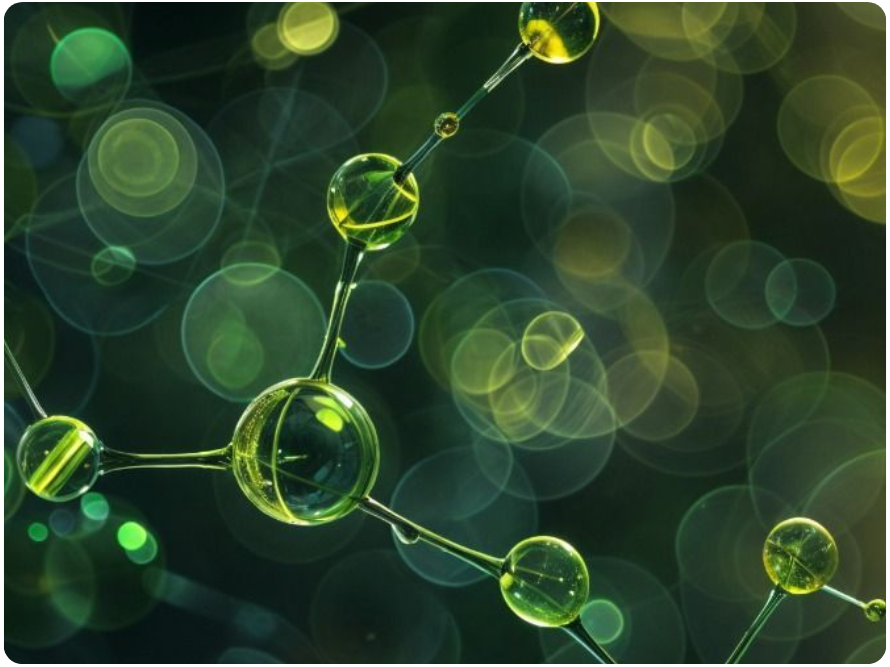Reference Library
Holistic Hangover Recovery, Rooted in the Gut-Liver Axis
Our formulation is built on over three decades of microbiome and nutritional research, targeting the core biological systems disrupted by alcohol. Scientifically studied probiotics and prebiotics work synergistically to improve alcohol metabolism, reduce acetaldehyde levels, and reduce alcohol-induced gut barrier damage. Potent bioactives like curcumin and dihydromyricetin accelerate detoxification and protect liver cells from oxidative stress, while citrus-derived flavonoids help neutralize inflammation-driving free radicals. Together, these components help the body metabolize alcohol more efficiently, calm systemic inflammation, and restore cognitive clarity—helping you recover faster and feel better, naturally.
Key Formulations
Proprietary Probiotics + Prebiotics Formula
Targeted Antioxidant Support
Directions for Use
01 | Take 1 Before You Drink
Chew one Multi Fuel tablet before your first drink.
02 | Take 2 for a Big Night
Double up for extra support when the night’s going big.
03 | Share with Friends
Because recovery is better together.
04 | Wake Up Ready
Recover faster and wake up ready to take on your day.
References
- Paton, A. (2005). Alcohol in the body. BMJ : British Medical Journal, 330(7482), 85. https://doi.org/10.1136/bmj.330.7482.85
- Study finds correlation between oral microbiome, alcohol metabolism, and hangover severity. News. https://www.news-medical.net/news/20230704/Study-finds-correlation-between-oral-microbiome-alcohol-metabolism-and-hangover-severity.aspx
- Pohl, K., Moodley, P., & Dhanda, A. D. (2021). Alcohol’s Impact on the Gut and Liver. Nutrients, 13(9), 3170. https://doi.org/10.3390/nu13093170
- Jew, M. H., & Hsu, C. L. (2023). Alcohol, the gut microbiome, and liver disease. Journal of Gastroenterology and Hepatology, 38(8), 1205-1210. https://doi.org/10.1111/jgh.16199
- Xie, Z., Zhang, X., Zhao, M., Huo, L., Huang, M., Li, D., Zhang, S., Cheng, X., Gu, H., Zhang, C., Zhan, C., Wang, F., Shang, C., & Cao, P. (2022). The gut-to-brain axis for toxin-induced defensive responses. Cell, 185(23), 4298–4316.e21. https://doi.org/10.1016/j.cell.2022.10.001
- H. Turner, B. R., Jenkinson, P. I., Huttman, M., & Mullish, B. H. (2024). Inflammation, oxidative stress and gut microbiome perturbation: A narrative review of mechanisms and treatment of the alcohol hangover. Alcohol: Clinical and Experimental Research, 48(8), 1451-1465. https://doi.org/10.1111/acer.15396
- Mackus, M., Loo, A. J. V., Garssen, J., Kraneveld, A. D., Scholey, A., & Verster, J. C. (2020). The Role of Alcohol Metabolism in the Pathology of Alcohol Hangover. Journal of clinical medicine, 9(11), 3421. https://doi.org/10.3390/jcm9113421
- Jakubczyk, K., Janda, K., Kaczmarczyk, M., Łoniewski, I., & Marlicz, W. (2020). Gut Biofactory—Neurocompetent Metabolites within the Gastrointestinal Tract. A Scoping Review. Nutrients, 12(11), 3369. https://doi.org/10.3390/nu12113369
- Raasveld, S. J., Hogewoning, A., Bosma, E. R., Bouwmeester, N. H., Lukkes, M., Knipping, K., Mackus, M., Kraneveld, A. D., Brookhuis, K. A., Garssen, J., Scholey, A., & Verster, J. C. (2021). Immune Responses after Heavy Alcohol Consumption: Cytokine Concentrations in Hangover-Sensitive and Hangover-Resistant Drinkers. Healthcare, 9(4), 395. https://doi.org/10.3390/healthcare9040395
- Mackus, M., Lantman, S., Kraneveld, A. D., Brookhuis, K. A., Garssen, J., Scholey, A., & Verster, J. C. (2018). Susceptibility to Alcohol Hangovers: The Association with Self-Reported Immune Status. International Journal of Environmental Research and Public Health, 15(6), 1286. https://doi.org/10.3390/ijerph15061286
- H. Turner, B. R., Jenkinson, P. I., Huttman, M., & Mullish, B. H. (2024). Inflammation, oxidative stress and gut microbiome perturbation: A narrative review of mechanisms and treatment of the alcohol hangover. Alcohol: Clinical and Experimental Research, 48(8), 1451-1465. https://doi.org/10.1111/acer.15396
- Mackus, M., Kwon, O., Krishnakumar, I. M., Garssen, J., Kraneveld, A. D., Scholey, A., & Verster, J. C. (2020). The Inflammatory Response to Alcohol Consumption and Its Role in the Pathology of Alcohol Hangover. Journal of Clinical Medicine, 9(7), 2081. https://doi.org/10.3390/jcm9072081
- Forsyth, C. B., Voigt, R. M., & Keshavarzian, A. (2013). Intestinal CYP2E1: A mediator of alcohol-induced gut leakiness. Redox Biology, 3, 40-46. https://doi.org/10.1016/j.redox.2014.10.002
- Shukla, S., & Hsu, C. L. (2024). Alcohol Use Disorder and the Gut–Brain Axis: A Narrative Review of the Role of Gut Microbiota and Implications for Treatment. Microorganisms, 13(1), 67. https://doi.org/10.3390/microorganisms13010067
- Hillemacher, T., Bachmann, O., Kahl, K. G., & Frieling, H. (2018). Alcohol, microbiome, and their effect on psychiatric disorders. Progress in neuro-psychopharmacology & biological psychiatry, 85, 105–115. https://doi.org/10.1016/j.pnpbp.2018.04.015
- Lee, H., Lee, G., Hoang, T., Kim, S. W., Kang, C. G., Jo, J. H., Chung, M. J., Min, K., & Chae, H. (2022). Turmeric extract (Curcuma longa L.) regulates hepatic toxicity in a single ethanol binge rat model. Heliyon, 8(9), e10737. https://doi.org/10.1016/j.heliyon.2022.e10737
- Peng, Y., Ao, M., Dong, B., Jiang, Y., Yu, L., Chen, Z., Hu, C., & Xu, R. (2021). Anti-Inflammatory Effects of Curcumin in the Inflammatory Diseases: Status, Limitations and Countermeasures. Drug Design, Development and Therapy, 15, 4503. https://doi.org/10.2147/DDDT.S327378
- Khayatan, D., Razavi, S. M., Arab, Z. N., Hosseini, Y., Niknejad, A., Momtaz, S., Abdolghaffari, A. H., Sathyapalan, T., Jamialahmadi, T., Kesharwani, P., & Sahebkar, A. (2024). Superoxide dismutase: a key target for the neuroprotective effects of curcumin. Molecular and cellular biochemistry, 479(3), 693–705. https://doi.org/10.1007/s11010-023-04757-5
- Silva, J., Yu, X., Moradian, R., Folk, C., Spatz, M. H., Kim, P., Bhatti, A. A., Davies, D. L., & Liang, J. (2020). Dihydromyricetin Protects the Liver via Changes in Lipid Metabolism and Enhanced Ethanol Metabolism. Alcoholism, Clinical and Experimental Research, 44(5), 1046. https://doi.org/10.1111/acer.14326
- Liu, D., Mao, Y., Ding, L., & Zeng, A. (2019). Dihydromyricetin: A review on identification and quantification methods, biological activities, chemical stability, metabolism and approaches to enhance its bioavailability. Trends in Food Science & Technology, 91, 586. https://doi.org/10.1016/j.tifs.2019.07.038
- Wei, C., Chen, X., Chen, D., Yu, B., Zheng, P., He, J., Chen, H., Yan, H., Luo, Y., & Huang, Z. (2022). Dihydromyricetin Enhances Intestinal Antioxidant Capacity of Growing-Finishing Pigs by Activating ERK/Nrf2/HO-1 Signaling Pathway. Antioxidants (Basel, Switzerland), 11(4), 704. https://doi.org/10.3390/antiox11040704
- Microbiome Post. (2022). Probiotic supplement reduces alcohol absorption in small intestine. https://microbiomepost.com/probiotic-supplement-reduces-alcohol-absorption-in-small-intestine
- Jung, S., Hwang, J., Park, E., Lee, S., Chung, Y., Chung, M., Lim, S., Lim, T., Ha, Y., Park, B., & Chae, S. (2021). Regulation of Alcohol and Acetaldehyde Metabolism by a Mixture of Lactobacillus and Bifidobacterium Species in Human. Nutrients, 13(6), 1875. https://doi.org/10.3390/nu13061875
- Kwon, J.E., Hong, W., Jeon, H. et al. Suppression of P2X4 and P2X7 by Lactobacillus rhamnosus vitaP1: effects on hangover symptoms. AMB Expr 14, 30 (2024). https://doi.org/10.1186/s13568-024-01685-5
- Varesi, A., Campagnoli, L. I. M., Chirumbolo, S., Candiano, B., Carrara, A., Ricevuti, G., Esposito, C., & Pascale, A. (2023). The brain-gut-microbiota interplay in depression: A key to design innovative therapeutic approaches. Pharmacological Research, 192, 106799. https://doi.org/10.1016/j.phrs.2023.106799
- McFarlin, B. K., Henning, A. L., Bowman, E. M., Gary, M. A., & Carbajal, K. M. (2017). Oral spore-based probiotic supplementation was associated with reduced incidence of post-prandial dietary endotoxin, triglycerides, and disease risk biomarkers. World journal of gastrointestinal pathophysiology, 8(3), 117–126. https://doi.org/10.4291/wjgp.v8.i3.117
- Liu, Z. Z., Liu, T., Zhang, Z. T., & Fan, Y. R. (2024). Bacillus coagulans regulates gut microbiota and ameliorates the alcoholic-associated liver disease in mice. Frontiers in Microbiology, 15, 1337185. https://doi.org/10.3389/fmicb.2024.1337185
- Mahalak, K. K., Firrman, J., Bobokalonov, J., Narrowe, A. B., Bittinger, K., Daniel, S., Tanes, C., Mattei, L. M., Zeng, B., Soares, J. W., Kobori, M., S Lemons, J. M., Tomasula, P. M., & Liu, L. (2022). Persistence of the Probiotic Lacticaseibacillus rhamnosus Strain GG (LGG) in an In Vitro Model of the Gut Microbiome. International Journal of Molecular Sciences, 23(21), 12973. https://doi.org/10.3390/ijms232112973
- Amadieu, C., Coste, V., Neyrinck, A. M., Thijssen, V., Leyrolle, Q., Bindels, L. B., Piessevaux, H., Stärkel, P., Delzenne, N. M., & Leclercq, S. (2021). Restoring an adequate dietary fiber intake by inulin supplementation: A pilot study showing an impact on gut microbiota and sociability in alcohol use disorder patients. Gut Microbes, 14(1), 2007042. https://doi.org/10.1080/19490976.2021.2007042
- Amadieu, C., Coste, V., Neyrinck, A. M., Thijssen, V., Leyrolle, Q., Bindels, L. B., Piessevaux, H., Stärkel, P., Delzenne, N. M., & Leclercq, S. (2021). Restoring an adequate dietary fiber intake by inulin supplementation: A pilot study showing an impact on gut microbiota and sociability in alcohol use disorder patients. Gut Microbes, 14(1), 2007042. https://doi.org/10.1080/19490976.2021.2007042
- Duysburgh, C., Velumani, D., Garg, V., Cheong, J. W. Y., & Marzorati, M. (2024). Combined Supplementation of Inulin and Bacillus coagulans Lactospore Demonstrates Synbiotic Potential in the Mucosal Simulator of the Human Intestinal Microbial Ecosystem (M-SHIME®) Model. Journal of dietary supplements, 21(6), 737–755. https://doi.org/10.1080/19390211.2024.2380262
- Cao, J., Yu, Z., Liu, W., Zhao, J., Zhang, H., Zhai, Q., & Chen, W. (2019). Probiotic characteristics of Bacillus coagulans and associated implications for human health and diseases. Journal of Functional Foods, 64, 103643. https://doi.org/10.1016/j.jff.2019.103643
- Gupta, A. K., & Maity, C. (2021). Efficacy and safety of Bacillus coagulans LBSC in irritable bowel syndrome: A prospective, interventional, randomized, double-blind, placebo-controlled clinical study [CONSORT Compliant]. Medicine, 100(3), e23641. https://doi.org/10.1097/MD.0000000000023641
- Munir, H., Yaqoob, S., Awan, K. A., Imtiaz, A., Naveed, H., Ahmad, N., Naeem, M., Sultan, W., & Ma, Y. (2023). Unveiling the Chemistry of Citrus Peel: Insights into Nutraceutical Potential and Therapeutic Applications. Foods, 13(11), 1681. https://doi.org/10.3390/foods13111681
- Liew SS, Ho WY, Yeap SK, Sharifudin SAB. 2018. Phytochemical composition and in vitro antioxidant activities of Citrus sinensis peel extracts. PeerJ 6:e5331 https://doi.org/10.7717/peerj.5331
- Oboh, G., Ademosun, A.O. Characterization of the antioxidant properties of phenolic extracts from some citrus peels. J Food Sci Technol 49, 729–736 (2012). https://doi.org/10.1007/s13197-010-0222-y
- van de Loo, A. J. A. E., Mackus, M., Kwon, O., Krishnakumar, I. M., Garssen, J., Kraneveld, A. D., Scholey, A., & Verster, J. C. (2020). The Inflammatory Response to Alcohol Consumption and Its Role in the Pathology of Alcohol Hangover. Journal of clinical medicine, 9(7), 2081. https://doi.org/10.3390/jcm9072081
- Merlo, A., Mackus, M., Van de Loo, A. J., Van Neer, R. H., Vermeulen, S. A., Thijssen, S. S., Knipping, K., Bruce, G., Garssen, J., & Verster, J. C. (2023). An evening of alcohol consumption negatively impacts next-day immune fitness in both hangover-sensitive drinkers and hangover-resistant drinkers. Addictive Behaviors, 145, 107776. https://doi.org/10.1016/j.addbeh.2023.107776
- Anand, S.K., Ahmad, M.H., Sahu, M.R. et al. Detrimental Effects of Alcohol-Induced Inflammation on Brain Health: From Neurogenesis to Neurodegeneration. Cell Mol Neurobiol 43, 1885–1904 (2023). https://doi.org/10.1007/s10571-022-01308-2
- Silva, J., Yu, X., Moradian, R., Folk, C., Spatz, M. H., Kim, P., Bhatti, A. A., Davies, D. L., & Liang, J. (2020). Dihydromyricetin Protects the Liver via Changes in Lipid Metabolism and Enhanced Ethanol Metabolism. Alcoholism, Clinical and Experimental Research, 44(5), 1046. https://doi.org/10.1111/acer.14326
- Scazzocchio, B., & Minghetti, L. (2020). Interaction between Gut Microbiota and Curcumin: A New Key of Understanding for the Health Effects of Curcumin. Nutrients, 12(9), 2499. https://doi.org/10.3390/nu12092499
- Chen, Z., Chu, H., Chyau, C., Chu, C., & Duh, P. (2012). Protective effects of sweet orange (Citrus sinensis) peel and their bioactive compounds on oxidative stress. Food Chemistry, 135(4), 2119-2127. https://doi.org/10.1016/j.foodchem.2012.07.041
- Li, J., Shan, Y., Wu, X., Miao, H., & Zhao, Y. (2024). Gut microbiota regulates oxidative stress and inflammation: A double-edged sword in renal fibrosis. Cellular and Molecular Life Sciences: CMLS, 81(1), 480. https://doi.org/10.1007/s00018-024-05532-5

